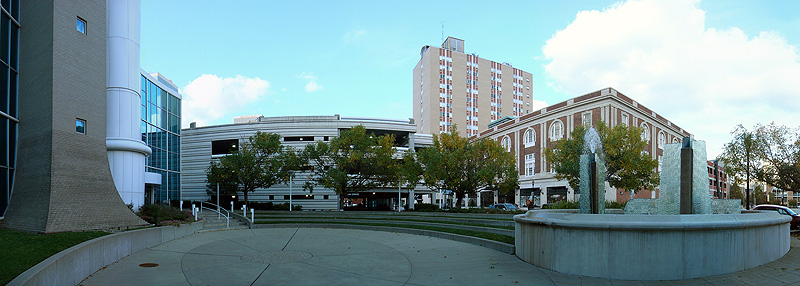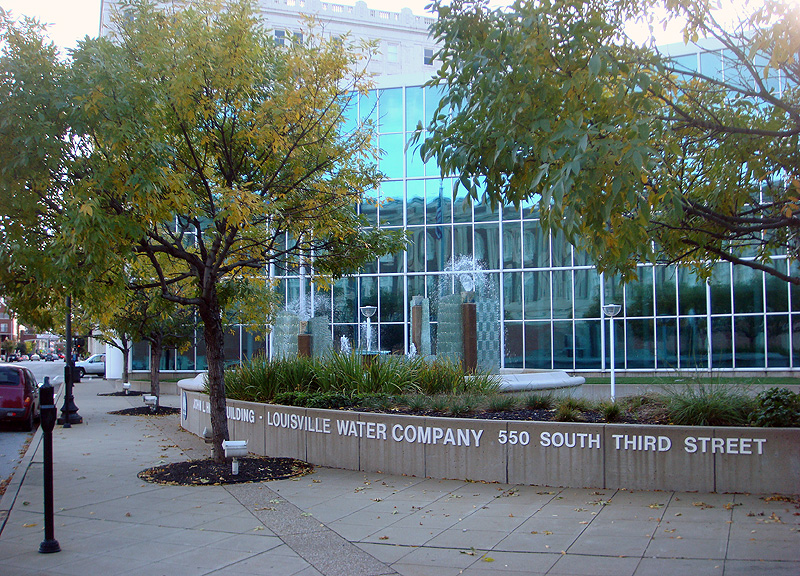I have walked down Third Street at Chestnut a hundred times, but the last time I journeyed through the area I decided to veer off the sidewalk and into a small plaza at the Louisville Water Company headquarters. Previously, however, I had never ventured into this small oval plaza. I had always known it was there and distinctly remember paying close attention to the fountain pushed up against the sidewalk. For some reason, though, the plaza had remained an enigma in my mind.

Thinking back, this particular space in Louisville’s urban landscape is an uncommon void in my memory. I can’t quite recall whether I have noticed people occupying the space; it’s all a blur. I can remember nothing of consequence happening there, but now was the moment I decided to experience the plaza first hand.
It’s fairly small, slightly sunken from sidewalk level, and features a small stepped seating area. On my late fall afternoon visit, the space was empty. The fountain was still running, one of the last in the city still providing the sound of running water. All in all, it’s easy to believe the space could provide an enjoyable break in the city for a conversation or a snack.
Why is it that some spaces in the city escape our memories? Is there a spot in the city you have recently discovered or remember but can’t place the details? What causes such an urban blur to form?
I might venture to guess that, for me, the space currently sits on an edge condition Downtown. Directly across Third Street is a vast surface level parking lot and the buildings beyond seem distant and disconnected. There are buildings nearby including the recently renovated Henry Clay and Madrid buildings, but the plaza generally lacks activation. A curving blue wall mirrors the void across the street and a parking garage blankly forms the northern boundary.
I don’t mean to imply that all public spaces should have high activity on all sides; that’s certainly not the case as this sheltered design and the hugging motion of the Water Company building provide a different sort of atmosphere. What, then, is the space (or perhaps what am I) missing?
- How We Live In Our Small Urban Spaces (Broken Sidewalk)




I would never have thought to venture into this plaza under the assumption that it's private property intended for the use of employees and tenants of the building.
Is it the enclosed design of this space that gives it an exclusionary feel? Or is it a cultural phenomenon that has placed a mental "No Trespassing" sign on anything that seems like private property?
Good point, Eric. The line between public and private has definitely been blurred with the addition of so many plazas and such (especially a new dubious legal term that opts to call these spaces open or green space as opposed to public space). According to the PVA, the land is owned in part by the City of Louisville, so I assume the Water Company Plaza still falls under some sort of actual public space. Anyone know for sure?